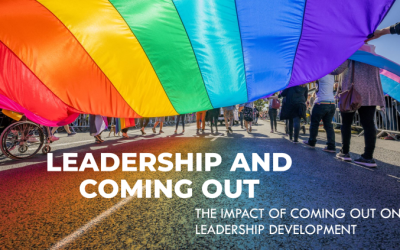The Confidence Gap Explained: Why It Exists and How We Can Bridge It
The “confidence gap” is a term that describes the difference in self-assurance between men and women, particularly in professional settings. While both men and women experience self-doubt, studies reveal that women often underestimate their abilities and are less likely to take risks unless they feel completely prepared. This hesitation contrasts with the typical male approach, where confidence is often higher, even when all qualifications aren’t met. The confidence gap doesn’t stem from any inherent deficiency in women’s abilities but is rooted in social conditioning, cultural expectations, and workplace biases. This article unpacks the confidence gap, exploring its causes and offering steps to bridge it effectively.
Defining the Confidence Gap
The confidence gap is best illustrated by common workplace scenarios. A study by Hewlett-Packard, for instance, found that men apply for jobs or promotions when they meet only 60% of the qualifications, while women wait until they meet 100%. This cautious approach can slow career progression and limit opportunities for women, especially early in their careers. At its core, the confidence gap is not about women’s capability but about how self-assured they feel in their abilities — a perception shaped largely by societal influences and workplace culture.
What the Data Tells Us
Studies provide clear data on how the confidence gap manifests and its impact on women’s professional lives:
-
Over- and Underestimation of Abilities: Research from Cornell University reveals that men are more likely to overestimate their abilities, while women often underestimate theirs. Despite equal performance, women rate their skills and potential lower than men, which affects how readily they take on challenges and seek advancement.
-
Confidence Curve Over Time: Zenger Folkman’s research shows that women’s confidence increases steadily with age and experience, peaking around age 40. By then, many women have built up a foundation of experience that boosts self-assurance. Meanwhile, men’s confidence remains relatively steady throughout their careers, meaning women often require more years in the workforce to reach a comparable level of self-assurance.
-
Imposter Syndrome: Women experience imposter syndrome — the feeling of being a fraud or unworthy of their position — more frequently than men. This internalized self-doubt is reinforced by societal expectations and can prevent women from fully embracing their professional potential.
The Causes Behind the Confidence Gap
To understand why the confidence gap exists, it’s essential to examine the societal and cultural factors that contribute to it:
1. Social Conditioning from a Young Age
From childhood, boys and girls are often encouraged to display different behaviors. Boys are typically urged to take risks, compete, and assert themselves, while girls are encouraged to be cautious, collaborative, and accommodating. These messages reinforce the idea that confidence and assertiveness are “masculine” traits, while caution and humility are “feminine.” By the time women enter the workforce, many carry an ingrained hesitancy to take bold steps.
2. Higher Standards and Fear of Judgment
In many professional environments, women face higher expectations and scrutiny. They often feel they need to be “perfect” to avoid criticism, leading to perfectionism and fear of failure. This results in hesitation to pursue roles where they might face high visibility or intense pressure, reinforcing a cycle of self-doubt.
3. The “Double Bind” in Leadership
Women in leadership often navigate a “double bind”: when they assert themselves, they risk being seen as “too aggressive,” while a collaborative approach can be perceived as weak or indecisive. This narrow band of acceptable behavior discourages women from projecting confidence and initiative, even if they possess the skills required for leadership.
4. Lack of Role Models and Mentors
In male-dominated industries, women frequently encounter a scarcity of female role models. Without visible examples of women in leadership, aspiring female leaders may struggle to see themselves in senior roles. This absence reinforces the belief that women must work harder to gain the same level of success, often resulting in more self-doubt.
The Impact of the Confidence Gap on Career Growth
The confidence gap has real, measurable consequences for women’s careers and overall workforce diversity:
-
Missed Opportunities for Advancement The hesitation to apply for roles or take on high-profile projects limits women’s early-career growth. This “broken rung” effect means fewer women are represented at the management level, which further restricts their progression to senior leadership roles.
-
Underrepresentation in Leadership As fewer women pursue promotions due to confidence-related barriers, gender diversity in leadership roles remains low. This underrepresentation reduces the diversity of perspectives at decision-making levels, impacting organizational culture and inclusivity.
-
Lower Job Satisfaction and Increased Burnout The confidence gap can lead to feelings of inadequacy and exhaustion, particularly for women who feel they need to prove themselves constantly. This pressure to meet high expectations can lead to burnout, impacting women’s well-being and decreasing long-term retention.
Bridging the Confidence Gap: Steps for Individuals and Organizations
Addressing the confidence gap requires efforts from both individuals and organizations. Here’s how we can work together to close this divide:
For Individuals:
-
Focus on Strengths and Accomplishments Women can build confidence by acknowledging their strengths and successes. Reflecting on achievements and creating a “win” list can help counteract self-doubt and foster a more balanced self-perception.
-
Seek Mentorship and Sponsorship Mentors provide guidance, while sponsors actively advocate for their protégés’ advancement. These relationships can be instrumental in building confidence and gaining visibility for women in the workplace.
-
Embrace a Growth Mindset Confidence grows when we view challenges as learning opportunities. Women who adopt a growth mindset can feel empowered to take on new roles or projects, understanding that skills can be developed over time.
-
Challenge Perfectionism Perfectionism is a common obstacle to confidence. Recognizing that perfection isn’t necessary for growth can help women feel more comfortable taking on new challenges, even when they don’t feel fully prepared.
For Organizations:
-
Implement Unconscious Bias Training Training programs that address unconscious bias can help leaders recognize how gender stereotypes affect evaluations and feedback. Organizations should encourage an equitable, supportive feedback culture where women are evaluated based on objective criteria.
-
Create a Culture of Psychological Safety In an environment where employees feel safe to make mistakes and ask questions, confidence flourishes. Psychological safety allows women to take risks without fearing backlash, making it easier to pursue leadership roles.
-
Establish Inclusive Promotion Criteria Promotion criteria should focus on measurable skills rather than perceptions of confidence. Defining specific, competency-based criteria for advancement can help ensure that promotions are fair and reduce the reliance on subjective assessments.
-
Offer Leadership Development Programs Leadership programs that target confidence-building, negotiation, and public speaking can provide women with the skills and assurance they need to step into leadership positions earlier in their careers.
-
Encourage Role Models and Sponsorship Networks Organizations should highlight female leaders as role models, offering a clear path for other women to follow. By fostering sponsorship programs, companies can help close the confidence gap by giving women greater visibility and access to opportunities.
Moving Beyond the Confidence Gap
Addressing the confidence gap is about more than simply telling women to “be more confident.” It requires a fundamental shift in how we view leadership, gender roles, and workplace culture. By focusing on systemic changes and creating environments that recognize potential beyond stereotypes, we can empower more women to step into leadership roles without hesitation.
The confidence gap is not an inherent flaw in women but a reflection of the social and organizational structures that shape our perceptions. Bridging this gap will not only benefit women but also bring more diverse perspectives to leadership, strengthening our organizations and building a more inclusive future.
Latest Articles
The Reykjavík Index for Leadership 2024: We’re Failing Women in Leadership, and It’s Time for a Systemic Overhaul
The Reykjavík Index for Leadership 2024: We’re Failing Women in Leadership, and It’s Time for a Systemic OverhaulThe Reykjavík Index for Leadership 2024 reveals a sobering truth: our progress toward gender equality in leadership is not just stalling; it’s reversing....
The impact of coming out on leadership development
The impact of coming out on leadership developmentThe journey of coming out is a pivotal moment in the lives of LGBTQ+ individuals. It's a process that involves deep self-reflection, courage, and the willingness to embrace one's authentic self, often in the face of...


